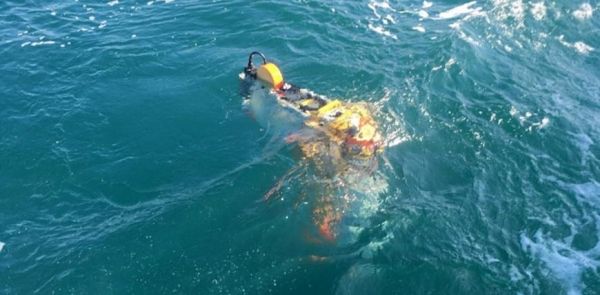The simple presence of these animals, some the size of a pen tip, can affect Navy operations through attenuation of acoustic signals, bioluminescence, and ambient noise.
To help increase our understanding of these intermediate trophic level (ITL) organisms like tiny crustaceans and jellyfish, researchers conducted a 14-day field campaign last year off the coast of Delaware. The campaign, led by U.S. Naval Research Laboratory oceanographer Brad Penta, collected information about the dynamics of ITL ecosystems near ocean fronts – areas that tend to be biologically active.
All organisms within an ecosystem belong to a particular trophic level – essentially a label of where they fall in the food chain. ITL animals can range in size from tiny copepods to large jellyfish. They are moved by currents throughout the ocean, and can form massive swarms.
Penta said swarms around underwater acoustic equipment can render the equipment output unreliable. Swarms can be so dense that sound reflects and reverberates off of them, causing false readings and adding to ambient noise.
Continue reading at U.S. Naval Research Laboratory
Image via U.S. Naval Research Laboratory


